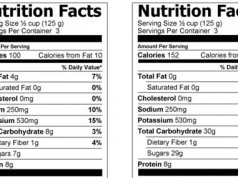Dear Pharmacist,
I saw you on TV the other day, talking about medicine cabinets and how to clean them out. I caught the tail-end of the segment, can you explain more about that in your column. I’m sure everyone can benefit. –M.L., Orlando, Florida
Answer: Sure, great idea. Besides, with TV you have to talk fairly fast and it’s hard to get in all the important points. The task of cleaning out your medicine cabinet can be overwhelming because people have accumulated pills, potions and products for years, and keep them “just in case.” The problem with this is that some products degrade and after their expiration date, they become useless, rancid or toxic. Because the task may feel cumbersome to people, and they may not want to let their ‘goodies’ go, I’ve prepared some ideas people so you can give your medicine cabinet a makeover in under 15 minutes. Here is my simple step by step action plan to keep your family safe and protected.
Step 1: Empty your medicine cabinet! This will allow you to find outdated products, or those that have changed color, begun to ooze, or developed an unpleasant aroma. Nearly every product has an expiration date, even sunscreen and makeup.
Step 2: Sanitize it. Wipe down the empty shelving.
Step 3: Properly dispose of all products, and be mindful of the environment. You can’t just flush them down the toilet anymore. Don’t hang on to outdated items. It doesn’t matter if the medication is just a month out of date, it’s out of date! You don’t want to fool around and take any chances with your family’s health. Trash it if any of the following:
– it is outdated
– you no longer take it
– you had an allergic reaction, or developed skin rash after taking it
– you got it from a friend, never share prescription medications!
– it’s starting to deteriorate (crumbling, odor, color change, exposed to humidity)
– it’s been recalled (you can find recalled products at the FDA website)
Step 4: Sort it. Keep groups of items together, for example, items for wounds such as bandages, gauze, medical tape and antibiotic ointment should be kept together. Eye drops, sterile eye pads and eye wash solutions should be stored together, and so on.
Step 5: Stock it properly. Keep the following on hand.
– a pain-reliever/fever-reducer
– antibiotic ointment, peroxide and tea tree oil
– ipecac for accidental poisoning (however do NOT use unless directed to by so a poison control Agent).
– anti-itch cream (will help with rashes, insect bites, poison ivy)
– cough medicine/throat lozenges
– tweezers for pulling splinters
– thermometer
– ice pack/ heating pad or castor oil pack
– eye wash solutions
– butterfly wound closures
-an antacid should that beef taco revisit you at 2am
-nasal spray
-phenazopyridine used to relieve burning pain/urinary urgency
-all your prescribed medications, preferably in child-proof containers
Did You Know?
St. John’s wort can be used to relieve neuropathies (painful nerve sensations) by increasing key neurotransmitters in the body.













